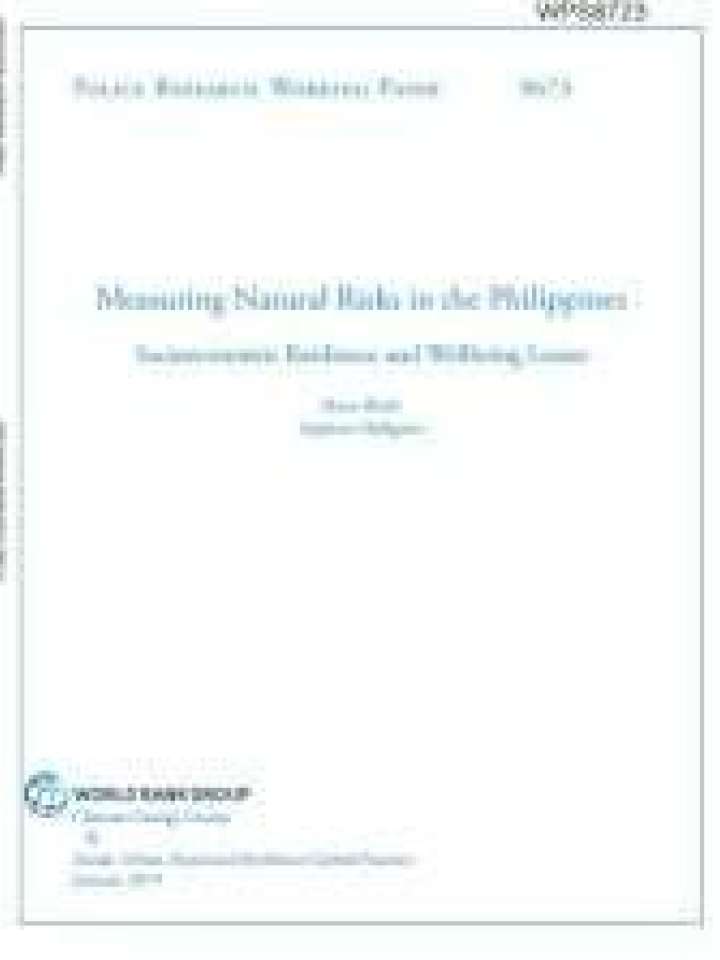Measuring natural risks in the Philippines: socioeconomic resilience and wellbeing losses
Traditional risk assessments use asset losses as the main metric to measure the severity of a disaster. This paper proposes an expanded risk assessment based on a framework that adds socioeconomic resilience and uses wellbeing losses as its main measure of disaster severity.
Using a new, agent-based model that represents explicitly the recovery and reconstruction process at the household level, this risk assessment provides new insights into disaster risks in the Philippines.
First, there is a close link between natural disasters and poverty. On average, the estimates suggest that almost half a million Filipinos per year face transient consumption poverty due to natural disasters. Nationally, the bottom income quintile suffers only 9 percent of the total asset losses, but 31 percent of the total wellbeing losses. The average annual wellbeing losses due to disasters in the Philippines is estimated at US$3.9 billion per year, more than double the asset losses of US$1.4 billion.
Second, the regions identified as priorities for risk-management interventions differ depending on which risk metric is used. Cost-benefit analyses based on asset losses direct risk reduction investments toward the richest regions and areas. A focus on poverty or wellbeing rebalances the analysis and generates a different set of regional priorities.
Finally, measuring disaster impacts through poverty and wellbeing impacts allows the quantification of the benefits from interventions like rapid post-disaster support and adaptive social protection. Although these measures do not reduce asset losses, they efficiently reduce their consequences for wellbeing by making the population more resilient.
Explore further
